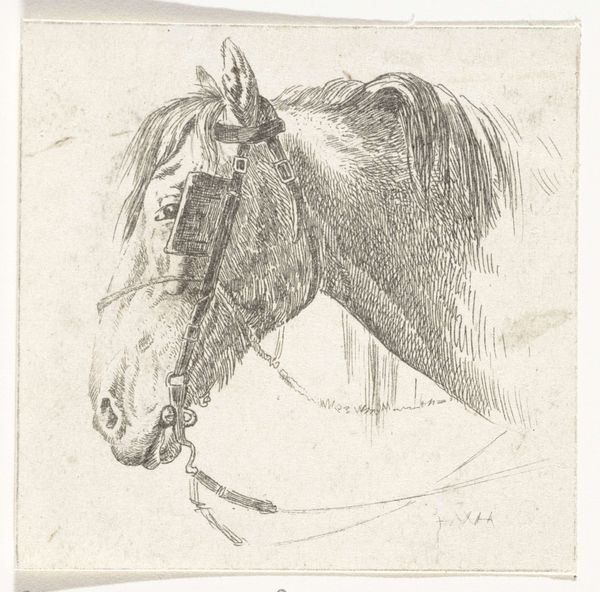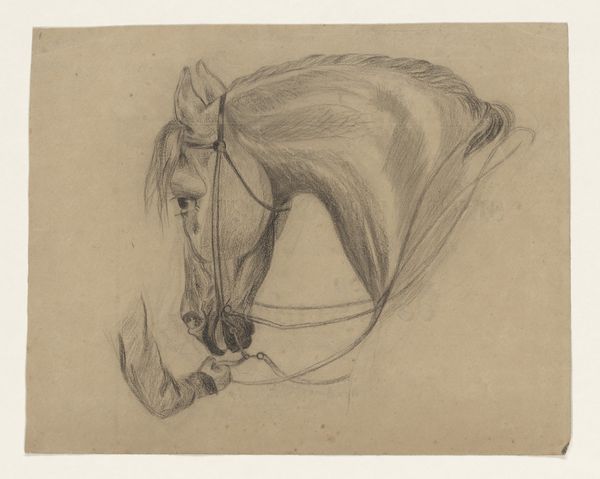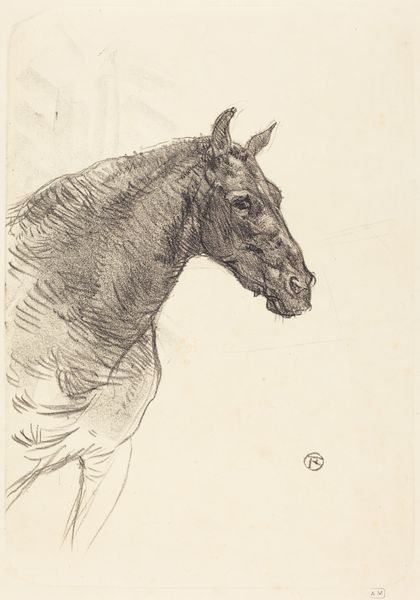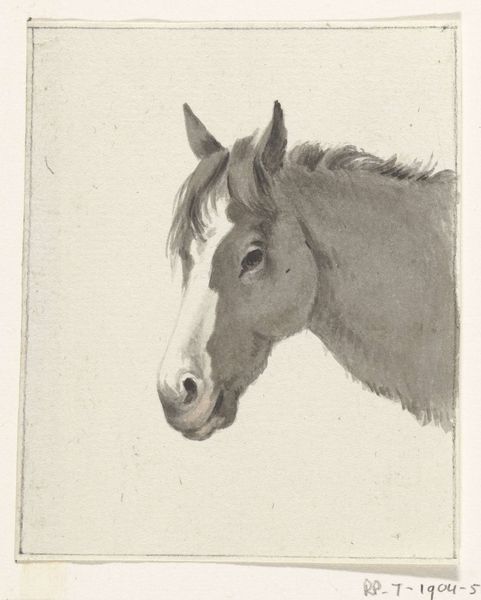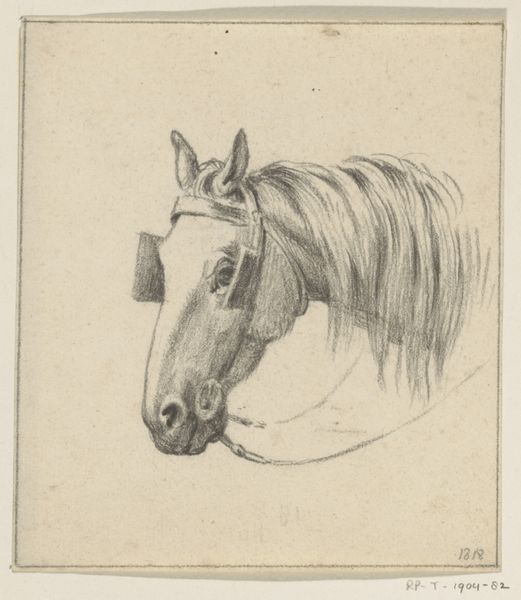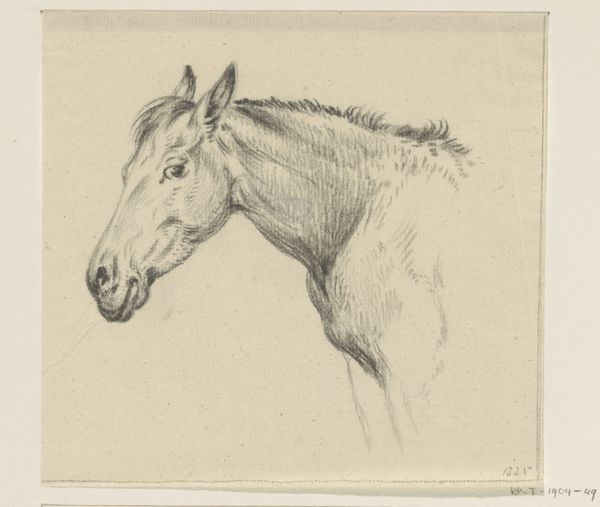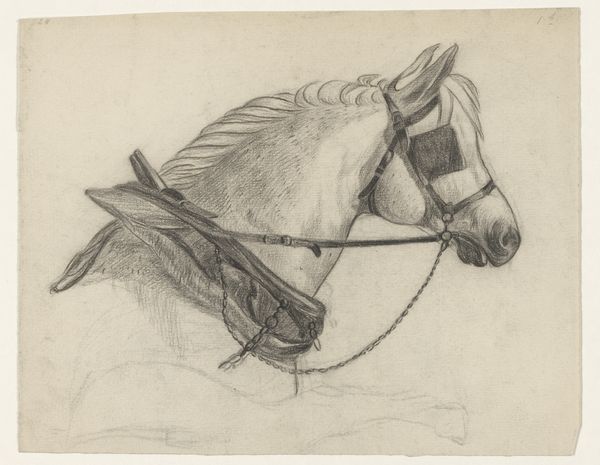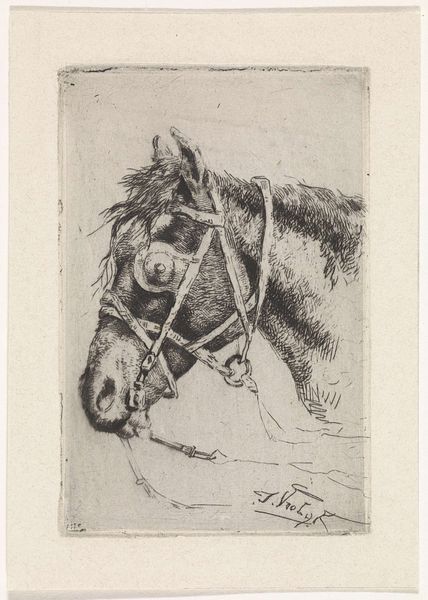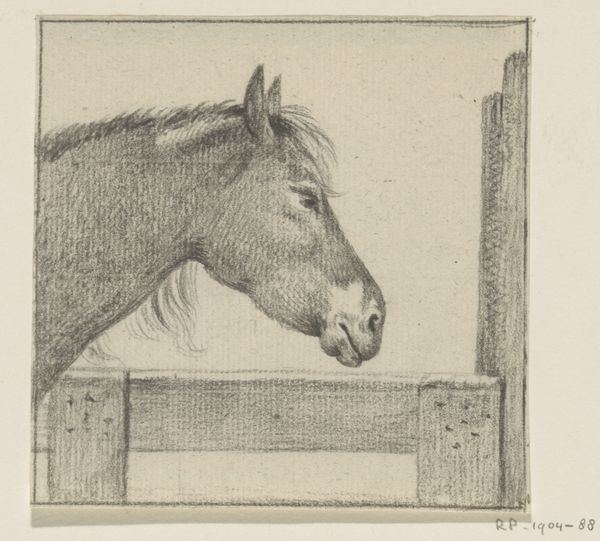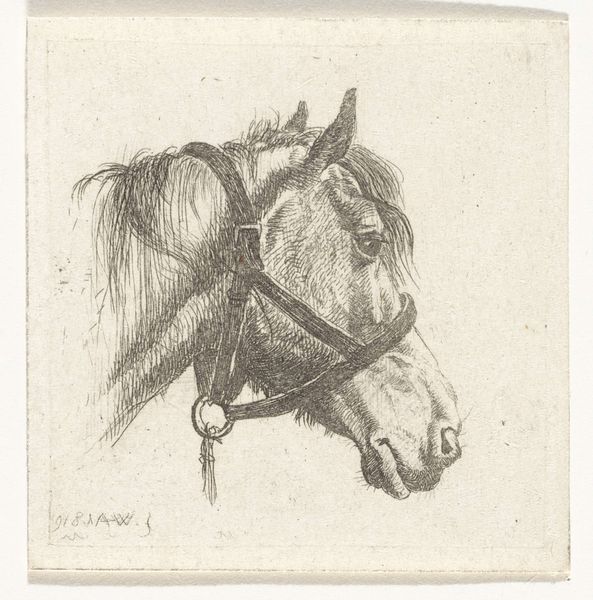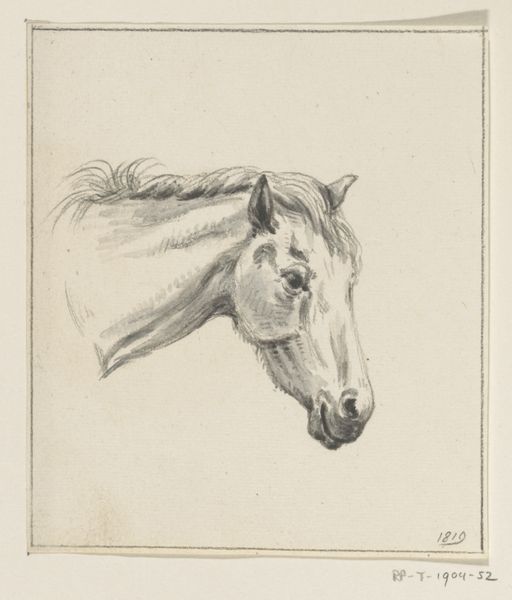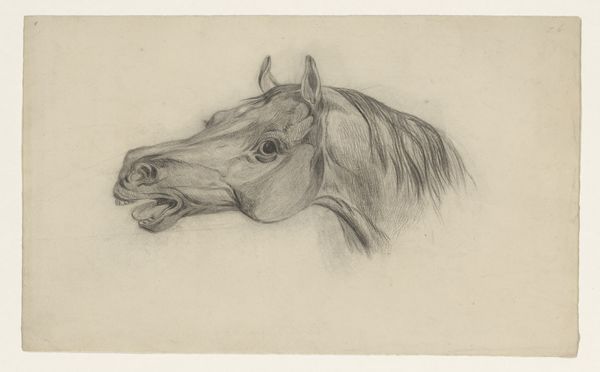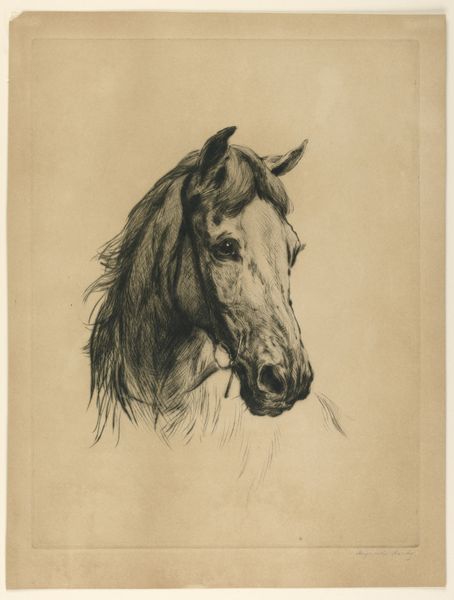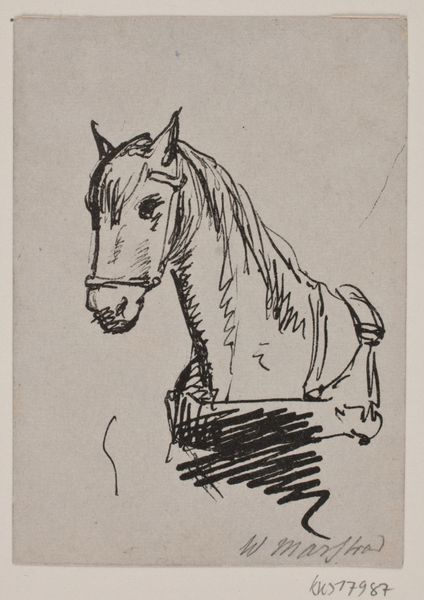
drawing, print, paper, pencil
#
portrait
#
pencil drawn
#
drawing
# print
#
pencil sketch
#
paper
#
pencil drawing
#
romanticism
#
pencil
#
pencil work
#
genre-painting
Dimensions: 137 mm (height) x 87 mm (width) (bladmaal)
Curator: A touching image. It's "Nissen i Tirup fodrer den hvide hoppe," made in 1842. The artist remains anonymous. This work, held at the SMK, utilizes pencil on paper in print form. Editor: It has an intimate, almost dreamlike quality. The texture created by the pencil is gorgeous, but there's an odd intimacy that is vaguely unsettling. Is the horse friendly or a bit burdened? Curator: That perceived tension speaks volumes. The piece exemplifies the Romantic era's fascination with folklore. The "nisse" or house gnome, is a recurring figure in Scandinavian folklore, often depicted as guardians of farms and animals. Their image was often connected to national identity. Editor: Fascinating. The horse’s symbolism as an emblem of strength and freedom is clear, but it feels secondary. It looks more like this Nissen owns it, instead of them being mutually free spirits together in nature. Does the Nissen's feeding of the horse suggest more of a subservient arrangement than pure friendship? Curator: It's a relationship rooted in tradition and agrarian society, more like they need each other than pure fun, so servitude is plausible. The farmer relied on the nisse for the farm's prosperity and animal well-being, with this care also acting as payment for the nisse's protection. This wasn’t always voluntary, either: Danish folklore speaks to a "nisse contract," meaning it might not have been their free choice. Editor: The pointed cap, the carefully drawn beard—they visually reinforce the gnome's historical presence in the popular imagination. It seems crucial, then, to note this contract wasn't about an agreement, it's about expectation, fear, and, sometimes, uneasy respect, as you have alluded to. What a tight space that poor creature must inhabit in society. Curator: Precisely. It is, at its core, an intriguing glimpse into 19th-century rural beliefs. The figure and context that comes with them provided comfort and cultural cohesion for communities during the rise of modernity. Editor: And even a warning that these ways of life need constant upkeep! It seems that looking closer has opened the work to richer ideas about ownership and hidden meanings that weren't immediately obvious. Curator: Indeed. Visual depictions often mirror complex social structures. It's nice to see one from the opposite side that we would normally consider!
Comments
No comments
Be the first to comment and join the conversation on the ultimate creative platform.
